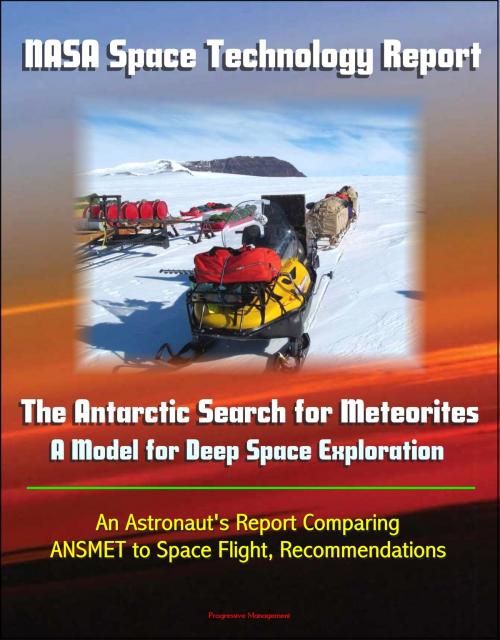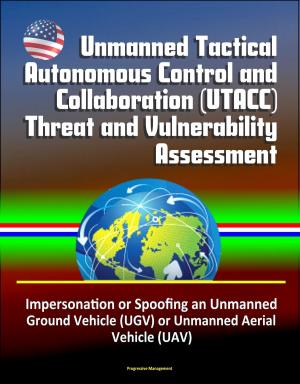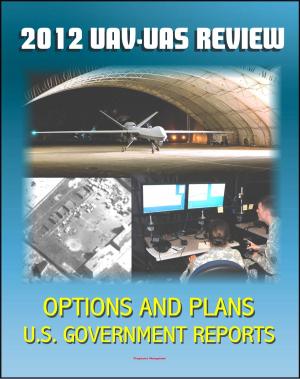NASA Space Technology Report: The Antarctic Search for Meteorites - A Model for Deep Space Exploration, An Astronaut's Report Comparing ANSMET to Space Flight, Recommendations
Nonfiction, Science & Nature, Technology, Aeronautics & Astronautics, Science, Physics, Astrophysics & Space Science| Author: | Progressive Management | ISBN: | 9781310972867 |
| Publisher: | Progressive Management | Publication: | September 11, 2014 |
| Imprint: | Smashwords Edition | Language: | English |
| Author: | Progressive Management |
| ISBN: | 9781310972867 |
| Publisher: | Progressive Management |
| Publication: | September 11, 2014 |
| Imprint: | Smashwords Edition |
| Language: | English |
The Antarctic Search for Meteorites (ANSMET) is an annual expedition to the southern continent to collect meteorites. In addition to its goal of gathering extraterrestrial material, it is a realistic model for human space flight. Similarities between ANSMET and Space Shuttle, International Space Station (ISS), and notional future Mars exploration flights include mission duration, major activities, circadian disturbances, a variety of supporting vehicles, small living quarters, allocation of crew time, environmental and systems-related hazards, crew stressors, communication limitations, resupply intervals, and crew involvement in public outreach. Differences include ANSMET's more benign environment, lack of weightlessness, limited crew training, generous personal baggage allowance, reduced physical danger, and absence of a mission control center. The correspondences between ANSMET and space flight make it as valid a model for space exploration as NASA's "analog" projects, which simulate space exploration missions in challenging environments on Earth.
The Antarctic Search for Meteorites (ANSMET) is an annual expedition to the southern continent to collect meteorites. ANSMET participants spend six weeks in the extreme cold of the polar plateau, living in primitive field camps and searching for meteorites on foot and with snowmobiles. Bad weather may confine them to their tents for days at a time. ANSMET resembles a space mission in terms of its remoteness, isolation, mission duration, crew stressors, limited resupply, major activities, circadian disturbances, supporting vehicles, small living quarters, allocation of crew time, environmental and systems-related hazards, restricted outside communication, and crew involvement in public outreach. ANSMET provides valuable insights about the future human exploration of deep space at a tiny fraction of the cost of a real mission. For example, ANSMET participants manage their own inventories, tasking, and mission priorities without a control center, setting a precedent for autonomous crews far from Earth. Installations in Antarctica devote about half of their area to logistics, a much greater fraction than on spacecraft, where limited stowage space impedes work. Unlike space crews, ANSMET group members enjoy plenty of good food, choice of personal equipment, and leader-selected teammates to help them stay cooperative and happy despite hardship.
Chapter 1 - Introduction * 1.01. Overview of Space Shuttle Missions * 1.02. Overview of International Space Station Missions * 1.03. Overview of a Reference Future Mars Mission * 1.04. Overview of NASA Extreme Environment Mission Operations (NEEMO) * 1.05. Overview of Desert Research and Technology Studies (Desert RATS) * 1.06. Overview of Pavilion Lake Research Project (PLRP) * 1.07. Overview of Antarctic Search for Meteorites (ANSMET) * Chapter 2 - Comprehensive characterization of ANSMET * 2.01. Description of the Mission * 2.02. Transportation To, From, and Within Antarctica * 2.03. Field Camp * 2.04. Collecting Meteorites * 2.05. Crew Concerns * Chapter 3 - Data from ANSMET * 3.01. 2004-2005 ANSMET Calendar Overview * 3.02. 2012-2013 ANSMET Calendar Overview * 3.03. Example Daily Timelines * 3.04. Use of Time in Camp * 3.05. Fatigue and Sleep in Camp * 3.06. Daily Distance Traveled * 3.07. 2004-2005 Personal Gear Packing List * 3.08. 2012-2013 Personal Gear Packing List * 3.09. List of NSF-Issued Field Gear * 3.10. Field Equipment Weight and Cube * 3.11. Use of Volume and Consumables in Camp * 3.12. Workload and Exertion * 3.13. Data on McMurdo Station as a Model Space Settlement * 3.14. Informal Wind Speed Measurement Technique * 3.15. An ANSMET Camp Recipe
The Antarctic Search for Meteorites (ANSMET) is an annual expedition to the southern continent to collect meteorites. In addition to its goal of gathering extraterrestrial material, it is a realistic model for human space flight. Similarities between ANSMET and Space Shuttle, International Space Station (ISS), and notional future Mars exploration flights include mission duration, major activities, circadian disturbances, a variety of supporting vehicles, small living quarters, allocation of crew time, environmental and systems-related hazards, crew stressors, communication limitations, resupply intervals, and crew involvement in public outreach. Differences include ANSMET's more benign environment, lack of weightlessness, limited crew training, generous personal baggage allowance, reduced physical danger, and absence of a mission control center. The correspondences between ANSMET and space flight make it as valid a model for space exploration as NASA's "analog" projects, which simulate space exploration missions in challenging environments on Earth.
The Antarctic Search for Meteorites (ANSMET) is an annual expedition to the southern continent to collect meteorites. ANSMET participants spend six weeks in the extreme cold of the polar plateau, living in primitive field camps and searching for meteorites on foot and with snowmobiles. Bad weather may confine them to their tents for days at a time. ANSMET resembles a space mission in terms of its remoteness, isolation, mission duration, crew stressors, limited resupply, major activities, circadian disturbances, supporting vehicles, small living quarters, allocation of crew time, environmental and systems-related hazards, restricted outside communication, and crew involvement in public outreach. ANSMET provides valuable insights about the future human exploration of deep space at a tiny fraction of the cost of a real mission. For example, ANSMET participants manage their own inventories, tasking, and mission priorities without a control center, setting a precedent for autonomous crews far from Earth. Installations in Antarctica devote about half of their area to logistics, a much greater fraction than on spacecraft, where limited stowage space impedes work. Unlike space crews, ANSMET group members enjoy plenty of good food, choice of personal equipment, and leader-selected teammates to help them stay cooperative and happy despite hardship.
Chapter 1 - Introduction * 1.01. Overview of Space Shuttle Missions * 1.02. Overview of International Space Station Missions * 1.03. Overview of a Reference Future Mars Mission * 1.04. Overview of NASA Extreme Environment Mission Operations (NEEMO) * 1.05. Overview of Desert Research and Technology Studies (Desert RATS) * 1.06. Overview of Pavilion Lake Research Project (PLRP) * 1.07. Overview of Antarctic Search for Meteorites (ANSMET) * Chapter 2 - Comprehensive characterization of ANSMET * 2.01. Description of the Mission * 2.02. Transportation To, From, and Within Antarctica * 2.03. Field Camp * 2.04. Collecting Meteorites * 2.05. Crew Concerns * Chapter 3 - Data from ANSMET * 3.01. 2004-2005 ANSMET Calendar Overview * 3.02. 2012-2013 ANSMET Calendar Overview * 3.03. Example Daily Timelines * 3.04. Use of Time in Camp * 3.05. Fatigue and Sleep in Camp * 3.06. Daily Distance Traveled * 3.07. 2004-2005 Personal Gear Packing List * 3.08. 2012-2013 Personal Gear Packing List * 3.09. List of NSF-Issued Field Gear * 3.10. Field Equipment Weight and Cube * 3.11. Use of Volume and Consumables in Camp * 3.12. Workload and Exertion * 3.13. Data on McMurdo Station as a Model Space Settlement * 3.14. Informal Wind Speed Measurement Technique * 3.15. An ANSMET Camp Recipe















